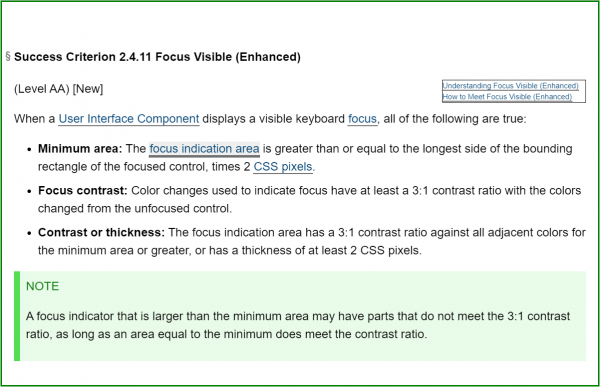Web Content Accessibility Guidelines (WCAG) is the global movement that aims to ensure the online world is easy for everyone to use, including those with physical and cognitive disabilities.
Many businesses are putting web accessibilty at the forefront of their digital strategy, especially the Australian Government and many not-for-profits.
However, there is still a very long way to go.
What are the Web Content Accessibility Guidelines?
The Web Content Accessibility Guidelines, are the guiding principles of web accessibility.
The WCAG clarify exactly how web elements should be designed, developed and maintained, to enable an accessible user experience for all users.
The WCAG are managed and updated by none other than the World Wide Web Consortium (W3C) who, if you don’t know, is the international online community that develops key standards and initiatives to sustain the long-term growth of the Web.
When was the Web Content Accessibility Guidelines introduced?
The W3C were extremely forward thinking with the first version of the Web Accessibility Guidelines 1.0 released in 1999 when the internet was still quite young.
The WCAG standards stood for almost 10 years until the WCAG version 2.0 was introduced in 2008 and is very close to the standards that we know today. The Web Content Accessibility Guidelines 2.0 took a broader approach to where accessibility applied in the digital world and introduced 4 key areas for accessibility compliance – Perceivable, Operable, Understandable, and Robust. We’ve explained these components in more detail in this blog.
Since 2008, the WCAG 2.0 guidelines were quickly adopted by international regulatory bodies (for example, the International Standards Organisation) and encouraged by a number of Government’s, including Australia.
The only other key update took place in June of 2018, with the release of the mini-update of WCAG 2.1.
WCAG 2.1 was a much smaller release with just a few new introductions, including considerations for mobile technologies, and more considerations for those with low vision and cognitive disabilities.
Both WCAG 2.0 and 2.1 continue to be accepted as the gold standard for web accessibility. Now it looks like a new update is coming in the WCAG 2.2.
What is new with the WCAG 2.2?
Now first it is important to note that the WCAG 2.2 has not been officially released yet and are still in a “Public Working Draft” stage.
We’ve pasted below a summary of “WHY” WCAG 2.2 is being release below from the W3C, because we couldn’t summarise it better ourselves:
“The result of this work is expected to be a more substantial restructuring of web accessibility guidance than would be realistic for dot-releases of WCAG 2. The work follows a research-focused, user-centered design methodology to produce the most effective and flexible outcome, including the roles of content authoring, user agent support, and authoring tool support.”
It seems that the working release’s primary focus is the structure and order of how the guidelines are rolled out more than anything. We’ve only found one new success criteria which is the Focus Visible (Enhanced) item that all user interface items display a visible keyboard focus. You can see more details on this below.
As the WCAG 2.2 guidelines are in a working draft state, you can review and submit feedback if you’re interested.
The official release date but we’ve heard rumours that this will happen in November 2020, so for now it is still recommended to rely on the WCAG 2.1 for accessibility testing and website compliance.
If you want to learn more about web accessibility or the Web Content Accessibility Guidelines 2.0, 2.1 or 2.2, please get in touch.
XPON are Australian web accessibility experts, providing web accessibility audits, design, training, consultation, and statements of accessibility across Sydney, Melbourne, Perth, Hobart, Adelaide, and Darwin.

